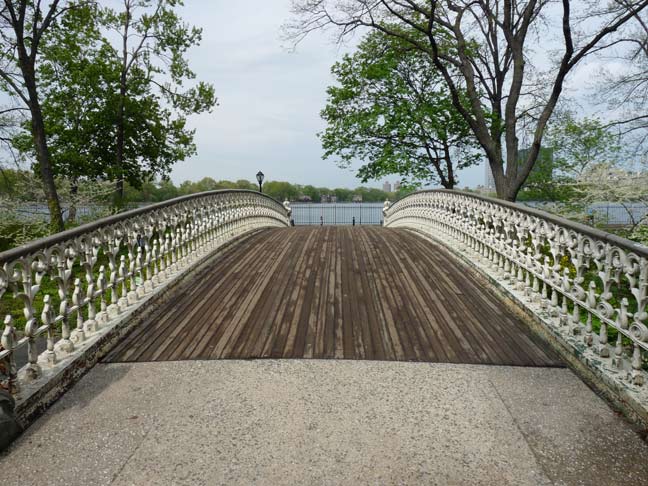When I worked at Macy’s between 2000-2004, the first year I was there, the summer of 2000, I took a lot of lunch hour time to get photos for FNY, using a film camera. I had to be really judicious getting just the right picture because I only had 24, 36 or 48 (if I had 2 rolls of 24) to deal with. Much of that summer was spent wandering around Central Park in the conception of my Bridges of Central Park series , seen here. I’m a Central Park devotee but not necessarily a nature geek, though I do like shade on a hot day. I always preferred seeking out the park’s buildings, monuments and infrastructure, a task I have let go by the wayside in recent years, as I’ve worked in Long Island between 2006 and 2011, and then sporadically in midtown at jobs that have kept me quite busy… none of those 90-minute lunches in Central Park anymore.
The time may be ripe for a reevaluation of Central Park’s infrastructure. I got the ball rolling in a springtime walk along the reservoir in which I got new photos of what some of the books, and my website, calls the Southeast Reservoir Bridge, but the Central Park people call Bridge #24 (in a series of 36, though I counted more).

San Remo Apartment towers are visible from Bridge #24, constructed in 1865 by Calvert Vaux and the Cornell Ironworks of cast iron and steel.

In 1989 its concrete deck was replaced with a tongue and groove wood deck, and it got new railings to approximate the original ones from 1865. This is one of three cast iron bridges spanning the old bridle path adjacent to the reservoir. Central Park can boast the largest collection of castiron spans in the United States.
6/30/14


7 comments
The reason for all those bridges in Central Park is the designers wanted separate bridle, carriage and walking paths without intersections. (The bicycle was not invented yet.) Many bridges have planters on the side to hide the fact that you walking over one of the traversal roadways.
wow, a beautiful structure! how is it possible that this has not been destroyed by grafitee over the years?
Most graffiti “artists” have enough sense (barely) to leave Central Park alone nowadays. Serious vandalism in CP would probably lead to a major crackdown on them. Plus, police patrols and park volunteer patrols usually means any graffiti that’s found gets removed pretty quickly.
Kevin is testing our powers of observation. The bridge in the first photo is not the one seen in the other two!
Hm, I may have encountered both bridges that day. It was a couple of months ago.
One of the many benefits of digital cameras. I don’t miss using film at all. 🙂
Film taught us all a lot of things. Lighting, composition and feeling. Digital is cold, all ones and zeros rather than silver halides. Film too me is a lot warmer. It also taught us to be judicious with our shots. Instead of spray and pray I still shoot like I only have 24 in the can. It tightens up your concentration.